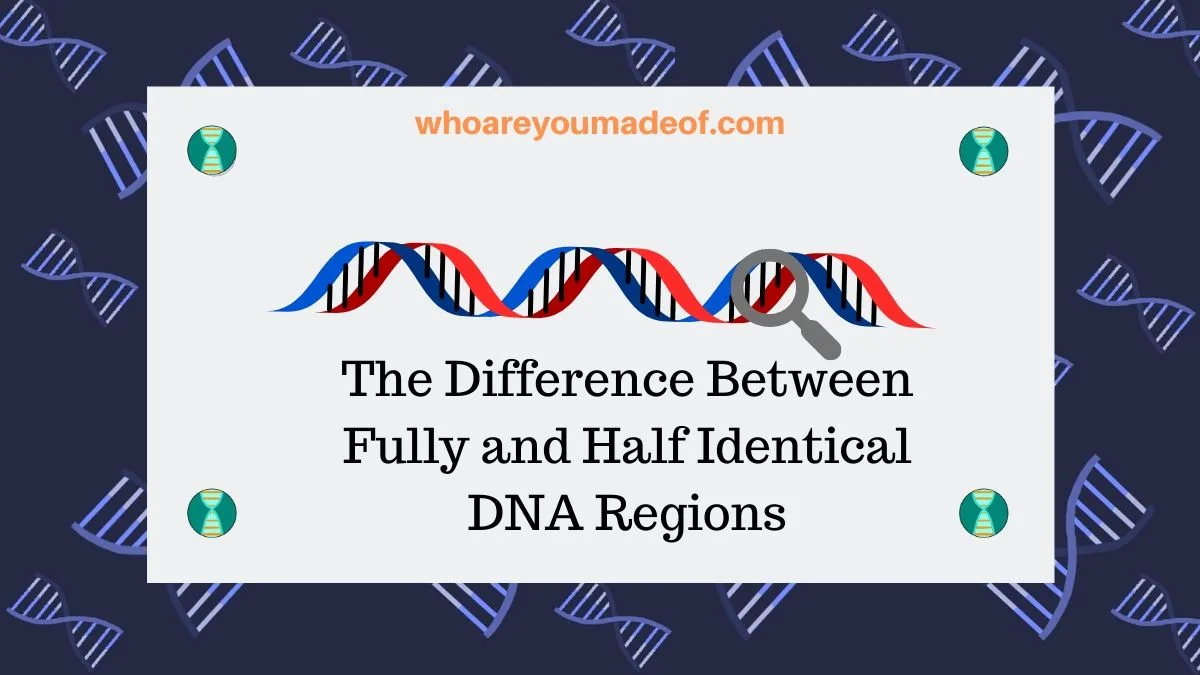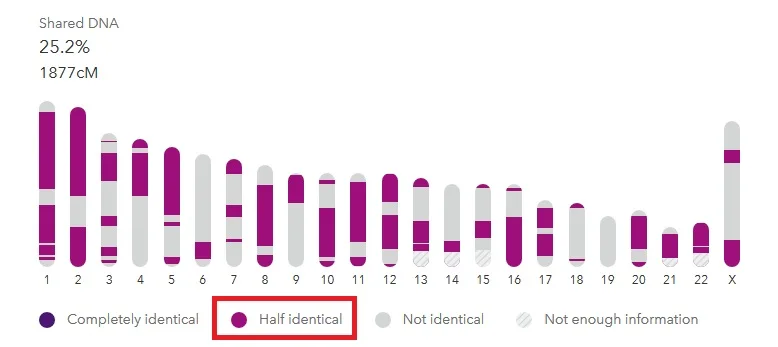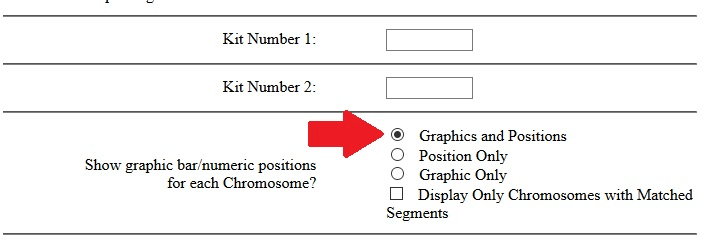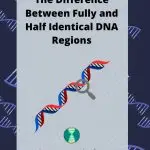Do you want to know the difference between fully and half-identical DNA regions? In this post, you will learn the definition of these two terms and learn the difference.
Plus, you will also find out what it means to share fully-identical regions with a DNA match.

For this post, it is important to understand that every human has 22 numbered chromosomes. We inherit one copy of each chromosome from each parent, which means that we have two copies of each chromosome.
What is a half-identical DNA region
As you know, each person inherits one copy of each chromosome from both their mother and father. This means that we have two copies of Chromosome 1, for example, one from mom and one from dad.
When we share a half-identical DNA region with a match, we refer to this as a half-identical DNA segment. For this purpose, the word "region" is generally interchangeable with the word "segment".
This half-identical DNA segment that we share with a match means that we inherited DNA from one of our parents that matches our genetic match. Since only one copy of our chromosomes matches the DNA match, we refer to this as a half-identical region.
Example of half-identical DNA regions shared with close relative
The image below shows two half-identical DNA segments shared between a person and their maternal half-aunt. The half-identical regions are shown in yellow, and the blue line below simply tells us that they are significant.

The table above the graphic tells us the size of the half-identical DNA segments. We can see that they are, indeed, significant.
The segments are 28.5 cMs and 24.0 cMs, which are fairly long segments.
What is a fully-identical DNA region?
Fully-identical DNA regions are segments that match on both copies of the same chromosome. This means that each copy of the chromosome is the same as those belonging to the DNA match within that region.
In other words, if you have a DNA match that shares a fully-identical DNA segment with you, it means that your copy 1 and copy 2 of the particular chromosome match your DNA match's chromosome 1 and 2.
Example of fully-identical DNA regions shared with close relative
In the image below, you can see the DNA comparison between two full sisters. They share four large DNA segments on Chromosome 3:

The yellow segments indicate the half-identical regions, meaning that they share identical segments inherited from either their mother or father. The green regions - the fully-identical regions - indicate the segments that they both happened to inherit from both parents.
What does it mean if you share fully-identical regions with a DNA match
There are two reasons that you share significant fully-identical regions with a DNA match:
- You are full siblings
- You are related to your DNA match on both sides of your family
The most common reason to find fully-identical DNA segments or regions is when you are comparing your DNA to your full sibling. Full siblings should have lots of long, fully-identical DNA segments.
Full siblings will also share significant numbers of half-identical DNA segments, too, however. This is because two siblings, even two full siblings, inherit a lot of DNA from each parent that the other sibling didn't get.
Many people find comparing DNA in a chromosome browser a useful tool to determine whether their DNA match is a full or half-sibling. Half-siblings will not share large fully identical DNA segments.
The image below shows DNA segments in common between two half-sisters on Chromosome 3. Half-identical segments are shown in yellow and fully identical segments are shown in green.
The blue line below the yellow segments displays how "significant" the DNA segment is. Larger segments are more significant, of course.

The other main reason that you will find fully-identical DNA segments shared with a DNA match is when you and your DNA match are related on both sides of your family. This is most common in people who come from families with a common ancestral heritage where endogamy was a common practice.
Take, for example, the example shown in the below image. The two people compared for this example come from the same community.
Due to the size and geographic isolation of their hometown, second and third cousins often intermarry. The result of this can be seen in their fully-identical regions.

Interesting to note in this example is how the fully-identical regions/segments overlap with the half-identical segments.
How to find out whether shared DNA segments are fully or half-identical regions
In order to know whether DNA segments that you share with a DNA match are fully-identical or half-identical, you will need to have access to a chromosome browser. This important because you need to be able to examine each chromosome.
Sites such as 23andMe actually tell you directly whether the segments shared with your match are half or fully-identical regions. In the "Your Genetic Relationship" section when you are viewing a match, simply click the "View DNA Details", and details about your shared segments will appear.
If the segment is half-identical, it will appear as light purple. Fully-identical regions will be shown in dark purple.
As an example, please see the DNA shared between an aunt and full niece:

If your DNA testing company does not provide access to a chromosome browser, you and your DNA match can upload your DNA data to Gedmatch. Gedmatch is a free site with lots of DNA analysis tools, one being a chromosome browser that allows you to examine each chromosome in detail.
On Gedmatch, you will use the One-to-One tool to compare your DNA with your match. When you enter the kit numbers to compare on the tool, you must choose the default "Graphics and Positions" setting, as shown in the image below:

Conclusion
I hope that this post has helped you learn the important difference between half-identical and full-identical DNA regions. This information can help you determine how you are related to your DNA match - and more!
If you have any questions about something that you read in this post, or if you would like to share your own experience with fully vs. half identical DNA segments, I would love for you to join us in the discussion below.
Thanks for stopping by today!



Geoff
Sunday 13th of August 2023
I have discovered a full identical match with a distant relative. It is a full identical match of the x pair of chromosomes with no other shared segments. We think we are related to the same direct ancestors dating back to 1500. If we share the same distant direct ancestors will we share a full identical match? Is there another reason we would have this match?